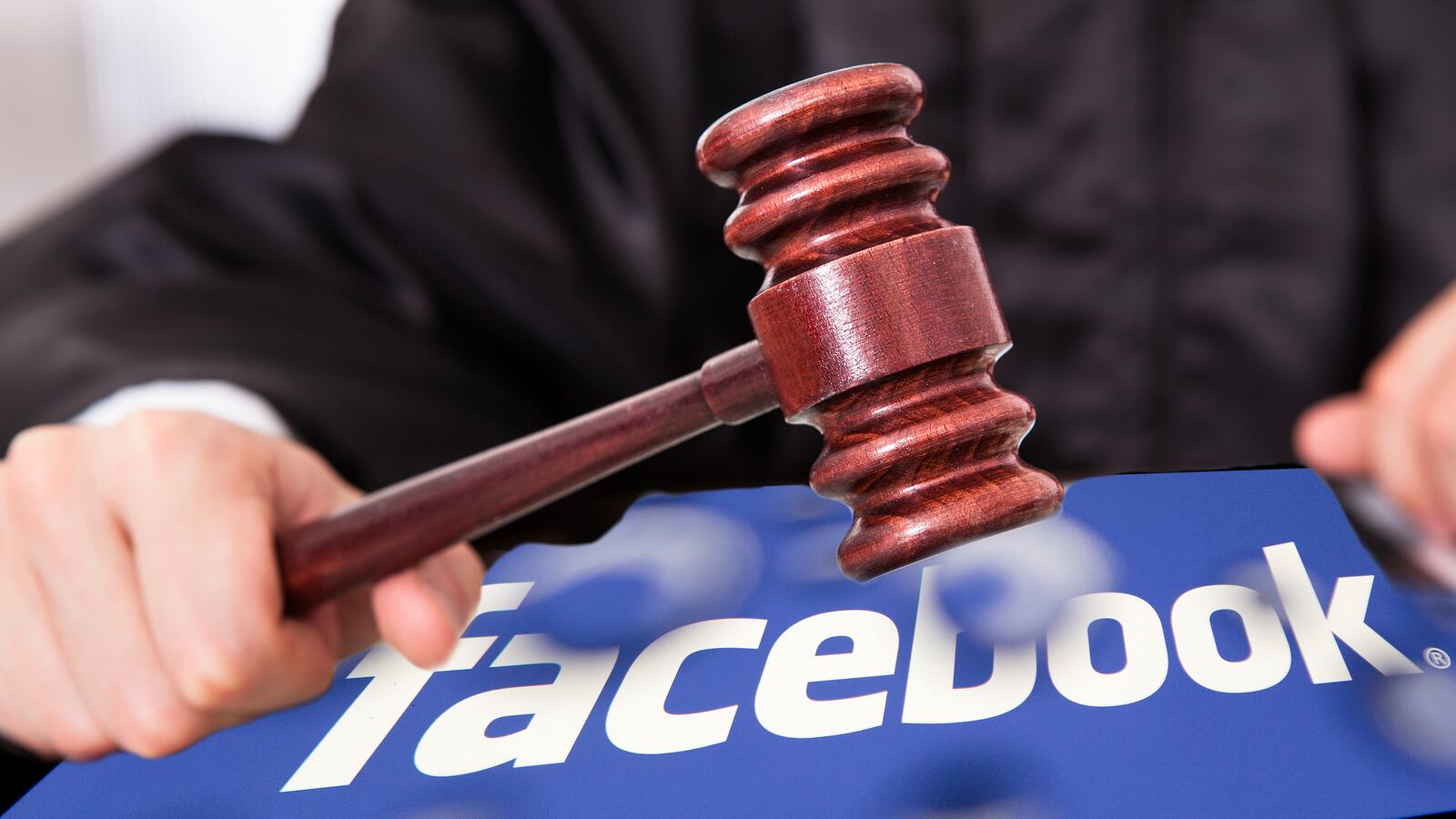On Monday, the Supreme Court will hear arguments in an important case involving the meaning of “threats” under the First Amendment. Anthony Elonis has served more than three years in prison for posting a series of seemingly threatening statements on Facebook.
After his wife left him, Elonis began posting these statements, sometimes in the form of rap lyrics, in which he declared, for example, that he would smother his wife with a pillow and dump her body in a creek, described how he wouldn’t rest until her body was “a mess, soaked in blood and dying from all the little cuts,” and declared that he would “slit the throat” of an FBI agent who was investigating his rants.
Elonis maintains that these statements, despite their quite horrifying tenor and tone, were not “threats” within the meaning of the First Amendment. Rather, he insists that they were therapeutic statements expressing his personal rage and pain and that he never intended for them to be taken seriously as actual threats of violence.
As a general rule, the First Amendment prohibits the government from punishing speech because it frightens, offends, annoys, angers, or upsets other people. This was made dramatically clear in the late 1970s during the Skokie controversy, when the courts held that members of the American Nazi Party, wearing swastika armbands and carrying Nazi flags and banners, could not constitutionally be prohibited from marching through the streets of Skokie, Illinois, a predominantly Jewish community whose residents included many survivors of the Holocaust, despite the fact that the march would clearly be deeply offensive, frightening, and upsetting to many of Skokie’s residents.
The government maintains that the Elonis case is different because Elonis used language that seemed explicitly to threaten his former wife and the FBI agent. The Supreme Court has long recognized that some “narrowly defined” categories of speech do not merit the full protection of the First Amendment. Among these are obscenity, defamation, fighting words, express incitement to unlawful conduct, and threats.
The question is whether the statements made by Elonis on Facebook fall within the category of “threats” that are not protected by the First Amendment. Just as the Supreme Court has famously wrestled with the challenge of defining the concept of obscenity, it has struggled with the definition of threats.
At Elonis’s trial, the jury was instructed that it could convict him if it found that a reasonable person would construe his statements as serious threats of violence. His wife testified that “I felt like I was being stalked. I felt extremely afraid for mine and my children’s and my families’ lives.” The jury found that this was a reasonable response to Elonis’ statements and that he was therefore guilty of making constitutionally unprotected threats.
Elonis maintains that the jury decided the wrong question. The issue, he insists, is not whether a reasonable person would interpret a statement as a threat, but whether the speaker intended it as a threat – that is, whether the speaker intended to cause fear in the target. Elonis insists that that was not his intent. Rather, he argues, his intent was not to instill fear, but to express his own rage and pain through hyperbole and artistic license.
Who has the better of the argument?
The first thing worth noting is that speech cannot constitutionally be restricted merely because the speakers knows it will frighten people. That is one lesson of the Skokie case. This principle applies quite broadly. A doctor who tells a patient that he will die if he doesn’t stop smoking is protected by the First Amendment, even though the patient is now terrified. A journalist who writes an op-ed warning that if the government doesn’t destroy ISIS immediately terrorists will swarm our shores with knives to decapitate our children is protected by the First Amendment, even though her readers are now horrified. All sorts of speech scares people, but that doesn’t make it unprotected by the First Amendment.
What, then, makes “threats” different? Why are “threats,” unlike other scary speech, outside the protection of the First Amendment? As we have seen, it is not just the fact that they scare people.
The answer is that the First Amendment is designed primarily to protect expression that affects people’s thoughts and actions through the process of persuasion. What makes threats different, and what justifies treating them as outside the protection of the First Amendment, is that they are intended not to persuade but to coerce. Although they take the form of words, they are more analogous to twisting a person’s arm until he agrees to do something. “If you don’t do what I want, I will kill you.” What makes threats unprotected, then, is that the speaker is using the threat for the purpose of instilling fear in order to override an individual’s free will by coercion.
Understood in that way, saying something that frightens another person is not a “threat” within the meaning of the First Amendment unless the speaker’s purpose is to frighten the target of the statement in order to coerce her to act in a certain manner. Speech that terrifies another person, but was not intended by the speaker as a threat, is not a “threat” for First Amendment purposes, even though a reasonable person would interpret it as a threat. It is, in short, the intent of the speaker that takes the frightening speech out of the ordinary protection of the First Amendment.
For this reason, the Supreme Court in the Elonis case should hold that Elonis is entitled to a new trial at which, in order to convict him, the jury must find, not just that a reasonable person would be frightened by his words, but that he intended his words to instill fear. Any other decision would run the risk of vastly expanding the concept of “threat” to the point where frightening speech more generally might be thought to be outside the protection of the First Amendment. That would be a disaster.
Of course, this does not mean that Elonis will be acquitted. On a re-trial, the jury might well find, not only that a reasonable person would interpret his words as a threat, but that he in fact intended them as a threat, despite his protestations to the contrary. But without that finding, Elonis’s conviction should be held to violate the First Amendment.






